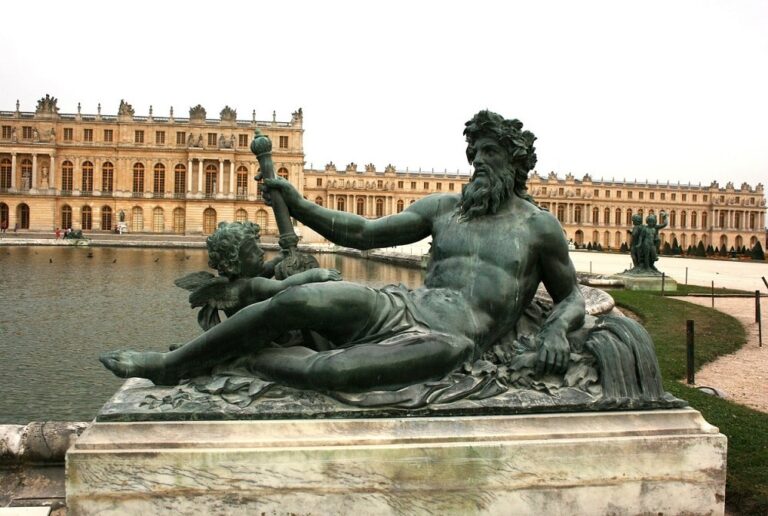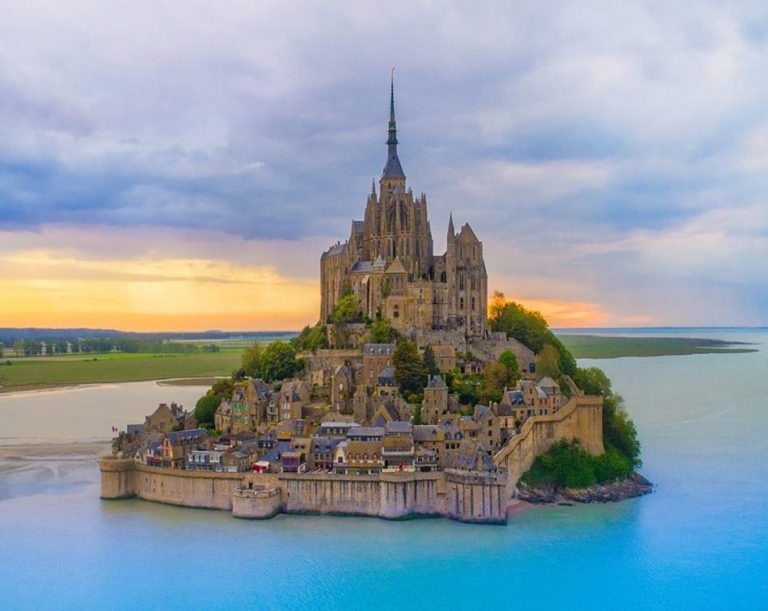Gulf of Alaska: Two Oceans Meet, But Do Not Mix
Last Updated on 5th March 2024 by admin
The Gulf of Alaska is located in the northeastern Pacific Ocean, off the southern coast of Alaska, between the Alaska Peninsula and the Alexander Archipelago in the United States.
Table of Contents
About Gulf of Alaska
Gulf of Alaska is an arm of the Pacific Ocean and covers an area of approximately 592,000 square kilometers (228,000 square miles). The gulf is surrounded by beautiful and rugged landscapes that attract tourists from around the world and one of the USA’s attractions.
The Gulf of Alaska is a diverse marine ecosystem and is home to a variety of fish species, including salmon, halibut, and cod. It is also an important habitat for marine mammals such as sea otters, seals, and whales.
The region is subject to a variety of weather conditions, including strong winds, high seas, and frequent storms. The Gulf of Alaska is also known for its intense seismic activity and is home to a number of active underwater volcanoes.
The Gulf of Alaska is a crucial economic and cultural resource for the indigenous peoples of the region, as well as for commercial fishing and shipping industries. However, the area is also vulnerable to environmental threats, such as oil spills and climate change, which can have devastating impacts on the ecosystem and local communities.

Gulf of Alaska’s Hidden Mysteries
Do you believe in magic? Well, the Gulf of Alaska has a secret that can leave you spellbound. Imagine a place where two oceans meet, but don’t mix! The Gulf of Alaska is one such enigmatic place that has left scientists puzzled for years.
The world is full of mysteries and there are some such things that seem nothing less than a miracle. 70 percent of the earth consists of only water. Finding the beginning and end of the oceans is a very difficult task. Today we are going to tell you about a strange phenomenon in the Gulf of Alaska, which is located in the northern Pacific Ocean and contains some of the secrets of the two oceans. There is a place in the Gulf of Alaska where two oceans meet but their waters do not mix, we can see a clear difference in their water. The sight of the electric blue water meeting, but not mixing with dark blue water is quite amazing.
This convergence creates a striking visual effect where the waters appear to be two different colors and never fully mix. In this article, we will explore the science behind this phenomenon, the causes of the two different colors, and the environmental significance of this natural wonder.
In this article, we will explore the mysteries of the Gulf of Alaska, delve into its facts and uncover the reasons behind why the two oceans don’t mix.
Gulf of Alaska Facts
The Gulf of Alaska is a place of wonder and mystery, where two oceans meet but don’t mix. This remarkable body of water has captured the hearts and minds of people worldwide, and for a good reason. Here are some fascinating facts about the Gulf of Alaska that will leave you in awe.
The meeting point of two oceans:
The meeting point of two oceans in the Gulf of Alaska is a breathtaking sight that leaves people in awe. The contrast between the warm, blue waters of the Pacific Ocean and the milky turquoise waters of the Arctic Ocean is striking. It’s a reminder of the power and beauty of nature, and we must take action to protect this wonder from environmental threats. Let’s ensure that this stunning natural phenomenon remains a thriving ecosystem for generations to come.
The boundary between the two oceans can be seen as a visible line, sometimes several kilometers wide, where the two oceans meet. The line is not always straight and can shift and change with the weather and tides. Sometimes, the two oceans can even mix due to the influence of strong winds, waves, or currents.
The cause of the two different colors of water:
The colder, nutrient-rich waters of the Alaska Current are brown or green in color due to the presence of suspended sediments, algae, and other organic matter. These nutrients are essential for the growth of phytoplankton, which in turn support the entire marine food chain. The warmer, saltier waters of the North Pacific Current, on the other hand, are blue or turquoise in color due to the lack of suspended matter and algae.
When the two currents meet, the nutrients and sediments from the Alaska Current flow into the North Pacific Current, creating the brown or green color at the surface. Meanwhile, the blue or turquoise waters of the North Pacific Current remain visible below the surface. This creates a striking visual effect where the two different colors of water appear to be side by side, but never fully mix.
The depth of the Gulf of Alaska:
The depth of the Gulf of Alaska is both mysterious and awe-inspiring. With an average depth of over 1500 meters and a maximum depth of over 4000 meters, it’s one of the deepest bodies of water in the world.
Exploring the depths of the Gulf of Alaska is a fascinating experience, revealing a diverse array of marine life and geological formations. It’s a reminder of the immense power of the ocean and the wonders that lie beneath its surface.
But the depth of the Gulf of Alaska also poses challenges and risks. Navigation in these deep waters requires skill and caution, and the extreme conditions can be treacherous for even the most experienced sailors. The depths also make it difficult to study and understand the complex ecosystem of the Gulf of Alaska.
The Climate of the Gulf of Alaska:
- “The Gulf of Alaska’s climate is as enigmatic as it is diverse. From icy fjords to lush rainforests, the region’s weather patterns constantly shift, creating an ever-changing landscape that is both awe-inspiring and unpredictable.”
- “Surviving the Gulf of Alaska’s climate is not for the faint of heart. With its tempestuous seas and extreme weather patterns, the region is a constant reminder of the immense power of nature.”
- “The Gulf of Alaska’s climate is a study in contrasts, where snow-capped peaks and verdant forests meet the vast expanse of the Pacific Ocean. Yet, despite its breathtaking beauty, the region’s weather can be as tumultuous as it is magnificent.”
- “The Gulf of Alaska’s climate is a force to be reckoned with. From bitter cold winters to summer storms that can rival hurricanes, the region’s weather can change at a moment’s notice, making it a challenging place to call home.”
- “The Gulf of Alaska’s climate is as complex as the region’s geography. With its mix of Arctic and Pacific influences, the area experiences some of the most extreme weather patterns on the planet, creating a climate that is both captivating and capricious.”
The Gulf of Alaska Picture
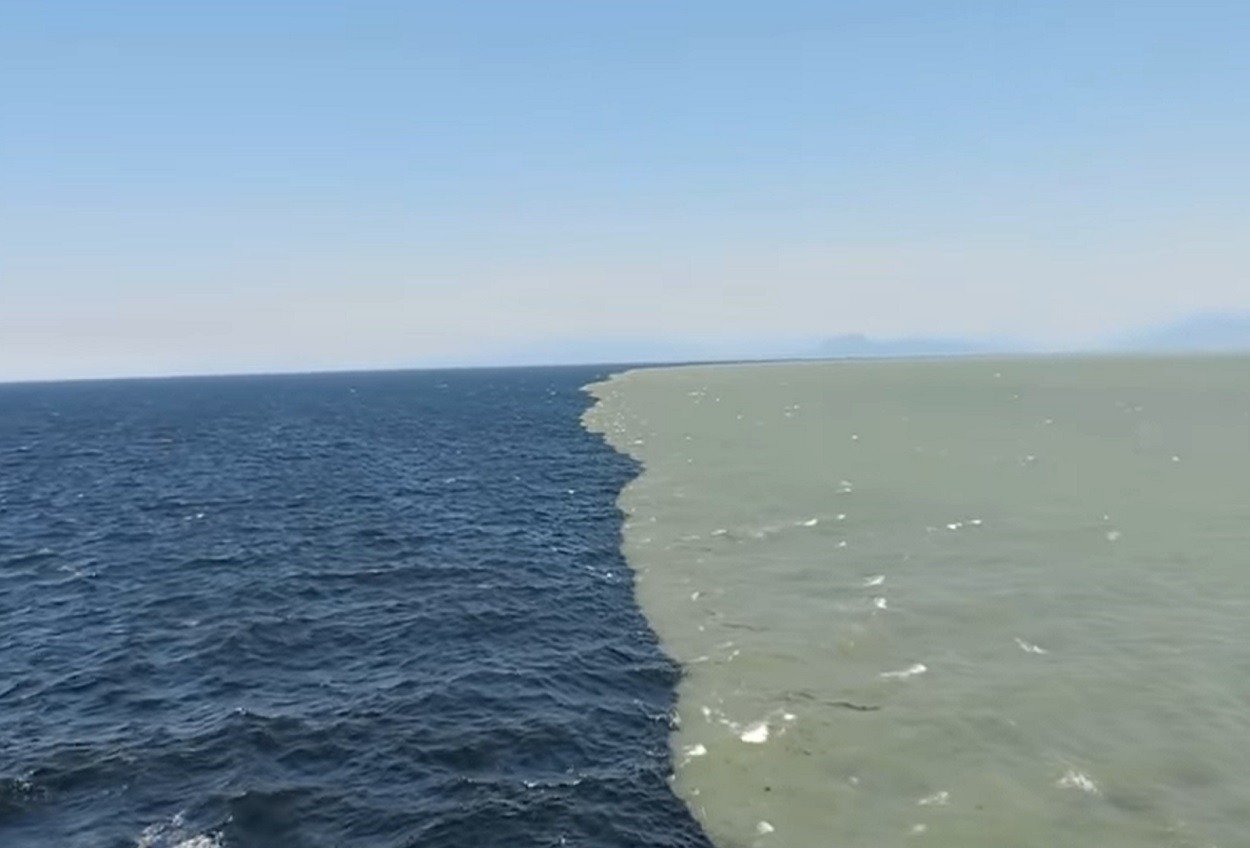
A picture of the Gulf of Alaska is a sight to behold. The gulf has two distinct colors of water – one is blue and the other is green. The blue water comes from the Pacific Ocean, while the green water comes from the glacial melt of the Copper River. The stark difference in color is a sight that is etched in the minds of anyone who has seen it.
Where Two Oceans Meet
The most remarkable feature of the Gulf of Alaska is that two oceans meet, but do not mix. It’s like two worlds colliding, but maintaining their individual identities. Scientists have been studying this phenomenon for years and have come up with several theories to explain it.
Theory 1 – Surface Tension:
The first theory is that the two oceans don’t mix due to surface tension. The difference in temperature and density creates a barrier that prevents the mixing of the water. The surface tension acts like a thin layer that keeps the two water masses separate.
Theory 2 – Coriolis Effect:
The second theory is that the Coriolis Effect causes the two oceans to separate. The Coriolis Effect is the force that causes fluids, including water, to move in a curved path rather than a straight line. The rotation of the earth causes this effect, which could be responsible for the separation of the two oceans.
Theory 3 – Density Difference:
The third theory is that the difference in density is the reason behind the separation of the two oceans. The Pacific Ocean is warmer and less dense, while the Arctic Ocean is colder and denser. This creates a boundary between the two water masses that prevents them from mixing.
Gulf of Alaska Oceans – Why Don’t They Mix?
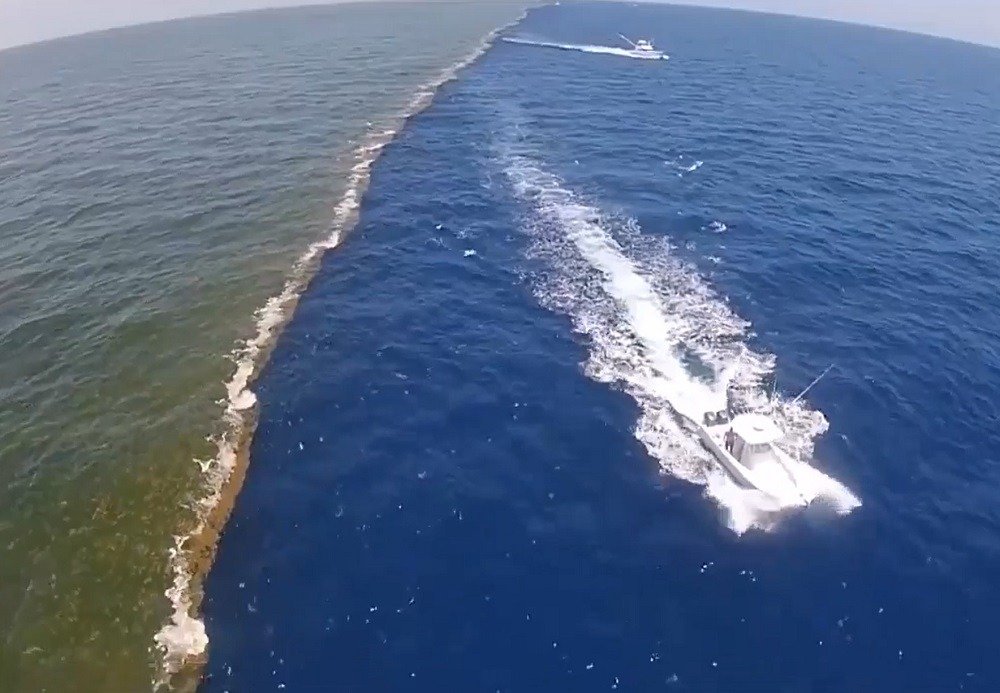
So, why don’t the two oceans mix? The answer is not straightforward, and the Gulf of Alaska has kept this secret for years. However, one thing is for sure – the Gulf of Alaska is a remarkable place that never ceases to amaze.
Imagine standing at the edge of the gulf and watching two different worlds meet, yet stay separate. It’s like standing at the brink of magic, where anything is possible. The beauty and mystery of the Gulf of Alaska have inspired many artists, writers, and filmmakers, and it continues to captivate the hearts of people worldwide.
But the Gulf of Alaska is not just a pretty sight. It’s a significant ecosystem that is home to various species of marine life. The unique environment of the Gulf of Alaska has created a habitat that supports diverse and abundant marine life, including whales, seals, sea lions, and many more.
However, the Gulf of Alaska is also facing various environmental challenges that threaten its delicate ecosystem. Pollution, climate change, and overfishing are just a few of the issues that are putting the Gulf of Alaska and its marine life in danger.
As we stand at the edge of the Gulf of Alaska, watching the meeting of two oceans, let us remember that we have a responsibility to protect this wonder of nature. We need to take steps to ensure that the Gulf of Alaska remains a thriving ecosystem, where two oceans meet, but don’t mix.
The Science Behind the Phenomenon
So, what is the story behind this unusual phenomenon? The Gulf of Alaska is an important region for oceanography research due to its unique oceanographic features. The phenomenon of two different colors of water not mixing is known as a “color line,” or a “color boundary.” This boundary is created when two different water masses with different physical and chemical properties meet.
To keep it simple here’s what happened: This is not the meeting of two oceans, glacial meltwater mixes with the waters of the Gulf of Alaska. Glacier meltwater, which has a light blue color and salty seawater, which has a dark blue color. All this is due to the difference in temperature variation, the density of the water and the salinity level of glacial meltwater, so the two do not mix each other.
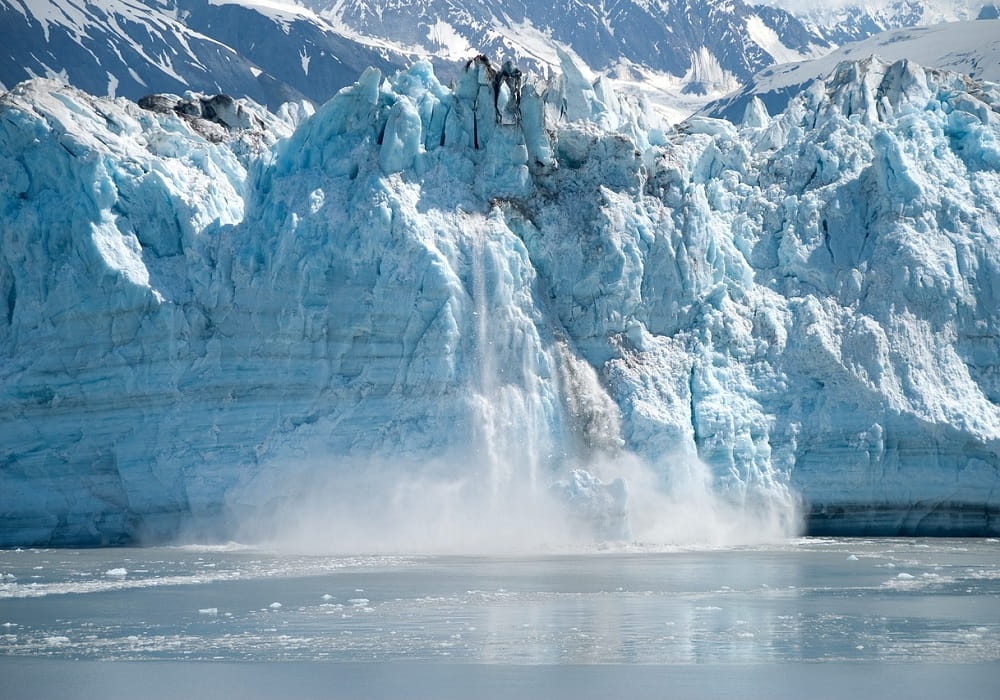
The Gulf of Alaska is the meeting point for two major ocean currents – the colder, nutrient-rich waters of the Alaska Current and the warmer, saltier waters of the North Pacific Current. The Alaska Current flows south from the Bering Sea, while the North Pacific Current flows north from the tropics. When these two currents collide, the differences in temperature, salinity, and nutrient content create a visible color line.
The result of the melting glaciers with fresh water, which intermingle with the ocean’s saltwater, has made it difficult for the two oceanic bodies of the water to mix because of the different densities. The Gulf of Alaska in the Pacific Ocean is essentially the curve of the southern coast of Alaska, which extends west from the Alaska Peninsula and Kodiak Island to the Alexander Archipelago in the east. In this area is also the Glacier Bay National Park and the ‘Inside Passage’ (Southeast Alaska).
The Environmental Significance:
The Gulf of Alaska’s unique oceanographic features have significant ecological and environmental implications. The nutrient-rich waters of the Alaska Current support a thriving ecosystem, including commercially important fish species such as salmon and halibut. The Gulf of Alaska is also an important breeding ground for marine mammals such as sea otters and humpback whales.
However, the Gulf of Alaska is also vulnerable to environmental threats such as oil spills and climate change. An oil spill in the Gulf of Alaska could have devastating effects on the local ecosystem, particularly on the salmon and herring fisheries. Additionally, climate change is causing changes in ocean temperatures and currents, which could have unknown effects on the Gulf of Alaska’s unique color line and ecosystem.
Gulf of Alaska’s color line phenomenon:
- Depth of the Color Line: The depth of the color line can vary depending on a number of factors, including the strength and direction of the currents, the amount of nutrients presents in the water, and the amount of sunlight that reaches the surface. In some areas, the color line can be visible from the air or even from space.
- Formation of Eddies: When the two currents collide, they can create swirling patterns of water known as eddies. These eddies can help to mix the two different water masses, which can have important implications for the distribution of nutrients and marine life in the region.
- Impact on Fishing: The Gulf of Alaska’s color line is a critical feature for commercial fishing operations in the region. Fishermen use the color line as a guide to locate schools of fish, which tend to congregate near the boundary between the two currents. The nutrient-rich waters of the Alaska Current also support the growth of phytoplankton, which are an important food source for many fish species.
- Changes over Time: The Gulf of Alaska’s color line is not a static feature – it can shift and change over time due to changes in ocean currents, water temperatures, and other environmental factors. Scientists are closely monitoring the region to better understand how the color line is changing and what this might mean for the ecosystem.
- Cultural Significance: The Gulf of Alaska’s color line is also an important cultural feature for many Native Alaskan communities. In traditional stories and legends, the color line is often seen as a boundary between two different worlds or as a reminder of the importance of respecting the natural world.
In conclusion, the Gulf of Alaska is a remarkable body of water that is home to diverse and abundant marine life. The meeting of two oceans and their separation has left scientists puzzled for years. However, the Gulf of Alaska is not just a pretty sight, but a unique ecosystem that supports many species of fish, whales, seals, sea lions, and seabirds. We must take responsibility for protecting this wonder of nature and ensure that it remains a thriving ecosystem for generations to come.
FAQs
- What is the average temperature of the Gulf of Alaska?
The average temperature of the Gulf of Alaska ranges from 6-10°C.
- What is the largest city near the Gulf of Alaska?
Anchorage is the largest city near the Gulf of Alaska.
- What is the depth of the Gulf of Alaska?
The Gulf of Alaska is one of the deepest oceans in the world, with depths reaching up to 15,000 feet.
- What is the primary industry in the Gulf of Alaska?
The primary industry in the Gulf of Alaska is fishing.
- What is the best time to visit the Gulf of Alaska?
The best time to visit the Gulf of Alaska is during the summer months, from May to September, when the weather is milder and the wildlife is more active.

